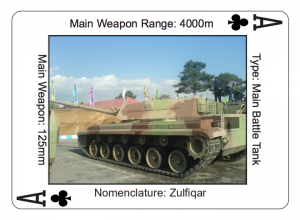In a not very subtle sign of the times, the U.S. Army has produced a deck of playing cards featuring weaponry used or held by Iran in order to familiarize soldiers with Iran’s inventory of weapons and presumably to facilitate their recognition on the battlefield.
The Iran collection follows similar decks of playing cards illustrated with Chinese and Russian weapons.
Another set of U.S. Army playing cards featuring North Korean weapons systems is forthcoming.
While rural schools are used to being scrappy and doing more with less, without state and federal support, districts will be hard-pressed to close teacher workforce gaps on their own.
To maximize clean energy deployment, we must address the project development and political barriers that have held us back from smart policymaking and implementation that can withstand political change. Here’s how.
At a time when universities are already facing intense pressure to re-envision their role in the S&T ecosystem, we encourage NSF to ensure that the ambitious research acceleration remains compatible with their expertise.
FAS CEO Daniel Correa recently spoke with Adam Marblestone and Sam Rodriques, former FAS fellows who developed the idea for FROs and advocated for their use in a 2020 policy memo.
